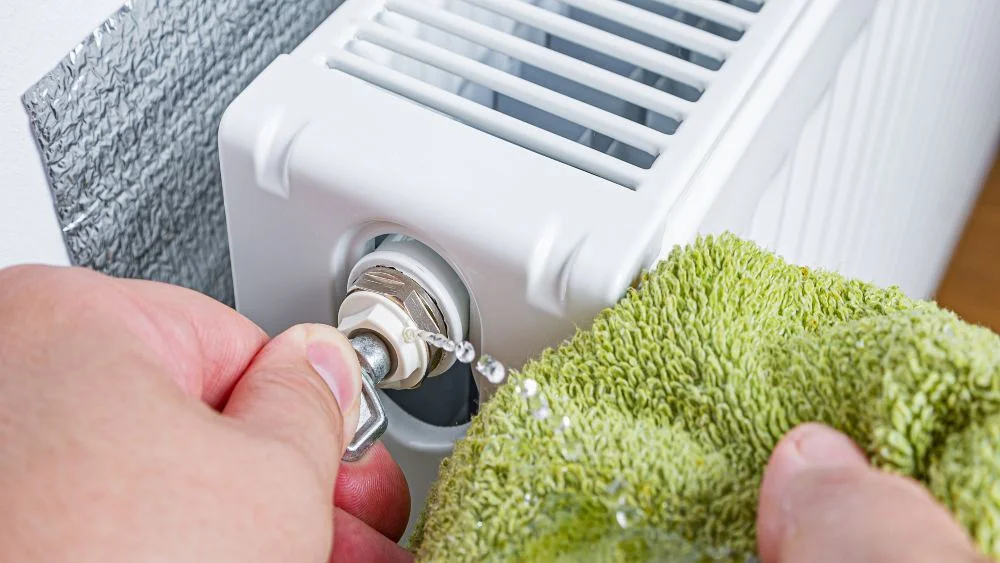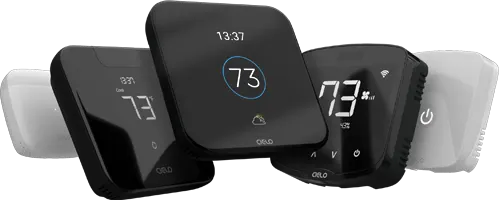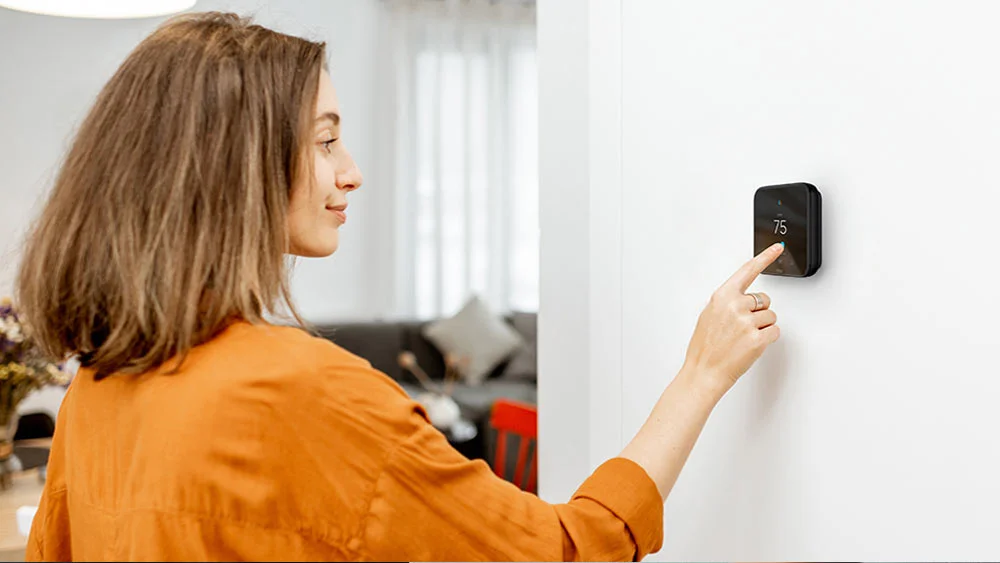
Key Takeaways
- Radiators work by distributing hot water or steam through a network of pipes connected to metal units in each room that radiate warmth.
- There are various types, such as panel, cast iron, baseboard, column, and towel radiators.
- You can boost the efficiency of your radiators by keeping up with their regular maintenance.
As the winter chill begins to creep inside, finding a reliable heating system becomes a top priority. Nothing beats the comfort of stepping into a warm, cozy room after braving the cold outdoors. Among the many options available, radiators have stood the test of time as a dependable and efficient choice for keeping your living space warm and inviting.
Whether you’re curling up with a book, hosting a holiday gathering, or simply escaping the biting winter air, radiators provide consistent heat to ensure your home stays comfortable all season long. With modern designs and energy-efficient options, radiators blend practicality with style, making them a perfect companion for the frosty months.
This blog will answer your various questions like how do radiators work, their types, benefits, and even how to maintain them.
How Do Radiator Heaters Work?
A radiator is part of a central heating system that transfers heat to individual rooms. It is made from materials like cast iron or steel and features a finned or ribbed structure for increased surface area, enhancing heat transfer.
The heating process starts with a central system like a boiler that generates heat using hot water or steam. The heated fluid is then distributed throughout the home via a network of pipes connected to various radiator units in different rooms.
Hot air or steam flows through the radiator pipes, transferring its heat to the metal structure of the unit itself through a process called conduction. Next, the warmed radiator heats the air around it through convection. The hot air then rises, and cooler air takes its place to be heated by the radiator.
After the water in the pipes cools down or the steam condenses into liquid, it flows back to the boiler of the water heater to be reheated. Thus, the cycle repeats and provides your home with consistent warmth during the cold winter months.
Related: What Is a Hydronic Heating System? Is It an Effective & Efficient Heating Option?
How Do Electric Radiators Work?
Instead of using water or steam to heat the radiators, the heating system is connected to your home’s electric supply. It powers a specific element within the radiator to convert the electricity into heat. The heat is then emitted into the rooms to warm the air.
How Do Oil Radiators Work?
These portable radiators are mostly used in areas where targeted warmth is required. They consist of metal fins filled with heat-transfer oil. When turned on, the electric heating element heats the oil and circulates the liquid through the radiator to heat the fins and transfer that heat to the air using convection. The oil within these radiators has special heat retention properties that effectively absorb and store heat. It provides quick heating and proves to be a comfortable and consistent source of heat.
Main Components of a Radiator Heating System
- Radiator Unit: This is the visible part of the radiating heating system installed in individual rooms. It is crafted from materials like cast iron or aluminum and contains a network of tubes through which water or steam flows.
- Fins or ribs: Attached to the radiator unit, fins or ribs increase the surface area, enabling effective heat exchange.
- Mounting Brackets: Radiators are securely installed on walls or floors using sturdy brackets, providing stability.
- Boiler or Water Heater: It generates hot water or steam, which serves as the system’s primary heat source.
- Radiator Control Valves: These regulate the flow of water or steam entering and leaving the radiators. This allows you to make temperature adjustments in individual rooms. There are usually two main kinds of valves – lockshield valves and thermostatic radiator valves.
- Thermostat: It monitors indoor temperature and signals the boiler to heat as needed.
- Inlet/Outlet Ports: Radiators are equipped with inlet and outlet connections that enable the flow of hot fluid, ensuring efficient circulation of the heated medium.
Equip your HVAC system with smart features and achieve the perfect balance between comfort & savings.
Learn more
Pros and Cons of a Radiator Heating System
Here is a list of the pros and cons of a radiator heating system:
| Pros | Cons |
|
|
|
|
|
|
|
|
|
|
|
Types of Radiators
When learning about how do radiators work, you should know that there are five main types of radiators you can install in your home:
1. Panel Radiators
They are the most common types of radiators. They are designed to have one or two big panels as the main body, and either between or behind the panel, there are zig-zag-shaped convector fins, which increase the surface area of the radiator and help provide more heat to the room.
2. Cast Iron Radiators
They are sturdy radiator units found mostly in older properties. Because of their design, they are suited to retaining heat long after they are turned off and thus can be relied on to maintain a consistent temperature for a longer period.
3. Baseboard Radiators
These radiator units are installed at the base of the walls and are a discreet option for your home.
4. Column Radiators
Column radiators are, as the name suggests, a group of vertical metal columns connected. Although they might resemble cast iron radiators, they are much lighter and sleeker in appearance, making them suitable for any home.
5. Towel Radiators
These radiators, also called heated towel rails, have a ladder-like design with metal rails filled with water. They are often installed as bathroom heaters to heat towels and keep the area warm.
How to Make Radiator Heaters More Energy Efficient?
Radiator heaters offer numerous benefits that make them a reliable and popular heating choice:
- Find the leaks and gaps in your home and ensure they are covered to retain warmth. Proper home insulation allows the radiators to operate efficiently.
- John Gabrielli, an HVAC expert at Air Temperature Solutions, suggests, “Hanging reflective panels to the wall beyond radiators helps to reverse or reflect much heat inside from escaping with the wall.”
- Schedule regular boiler servicing to ensure peak efficiency and seamless operation of your heating system. “Dirt and sludge can accumulate inside the radiator, hindering water flow and reducing heat output,” says Gabrielli.
- Divide your home into heating zones to focus warmth where it’s needed, minimizing waste in unused spaces. You can easily control temperatures in different rooms by adjusting each radiator’s valves.
- Install energy-efficient radiators designed for better heat distribution. They lose very little heat, ensuring nearly all the energy used goes into warming your home. This prevents energy waste and ensures you have an energy-efficient home.
-
Radiator Heater Maintenance

While radiator heaters are generally low maintenance, you should still stay on top of their maintenance needs to ensure they run smoothly and efficiently.
- Clean the Radiator: Dust and debris can accumulate on and behind the radiator, affecting heat output. Regularly clean the surface and the area around the radiator to maintain efficiency.
- Bleeding radiators: Over time, air can get trapped in the radiator, causing cold spots and reducing efficiency. Bleed the radiator by opening the bleed valve with a radiator key or a flat screwdriver to release the trapped air. When the air escapes, you will likely hear a hissing sound; when water starts escaping, all the air has been released, and you can close your valve again.
- Leak Inspections: Check your radiator for any leaks to prevent water damage and other inefficiencies. Common leaky areas are joints and valve connections. To prevent them, make sure they are tightened.
- Balancing: This process involves regulating the flow of hot water to ensure all radiators heat up evenly.
Take Away
Radiators remain a reliable and efficient heating solution for homes, offering consistent warmth through a simple yet effective process. Now equipped with the knowledge of how radiators work, you know that these heaters ensure even temperature distribution, creating a cozy and comfortable environment during the cold months. With minimal maintenance, long-lasting durability, and energy-efficient performance, radiators continue to be a trusted choice for homeowners seeking comfort and reliability in their heating systems.
Frequently Asked Questions
Are Radiators Still A Popular Heating Choice?
Radiators are a more popular option for older homes. According to a 2022 study, only 1.3% of new single-family homes have radiators installed in them.
How Long Do Radiator Heaters Last?
Home heating radiators typically have a lifespan of 15 to 20 years, depending on the type and how well they are maintained. Regular HVAC maintenance, such as bleeding the radiator and routine inspections of the circulator and boiler, can help extend their life to 20 years or more.
What Are Lockshield Valves?
If you want to understand how do radiators work, it's important to understand lockshield valves. These valves are usually found on the side of the radiator from which the water flows. They help ensure that all the radiators in your house are heating evenly and maintain a balanced heating system. The valve is typically set by the HVAC technician and covered with a cap to prevent tampering. You will not need to change it unless there’s a system issue or you need to adjust the water flow.
Are Radiator Heaters Safe?
Radiator heaters are generally very safe, especially compared to forced-air systems that can spread mold and bacteria. While they can dry out indoor air, leading to minor issues like dry skin or a scratchy throat, burns are rare if professionally calibrated. Radiators are also safer than electric space heaters, a frequent cause of household fires.
What Are Thermostatic Radiator Valves?
These valves, located opposite the lockshield valves on the opposite end of the radiator, help control the system's temperature. If your TRV is smart or programmable, you can set it to your desired levels, and the valve will automatically adjust the temperature for you. Some smart TRVs can even adjust the radiator temperature based on your room temperature.
How Often Should You Bleed Your Radiator?
To keep your heating system running efficiently, it’s best to bleed your radiators at least once a year, ideally before winter sets in. If your radiators are slow to warm up or make unusual noises, bleeding them more often can help ensure optimal performance and a quieter operation.








